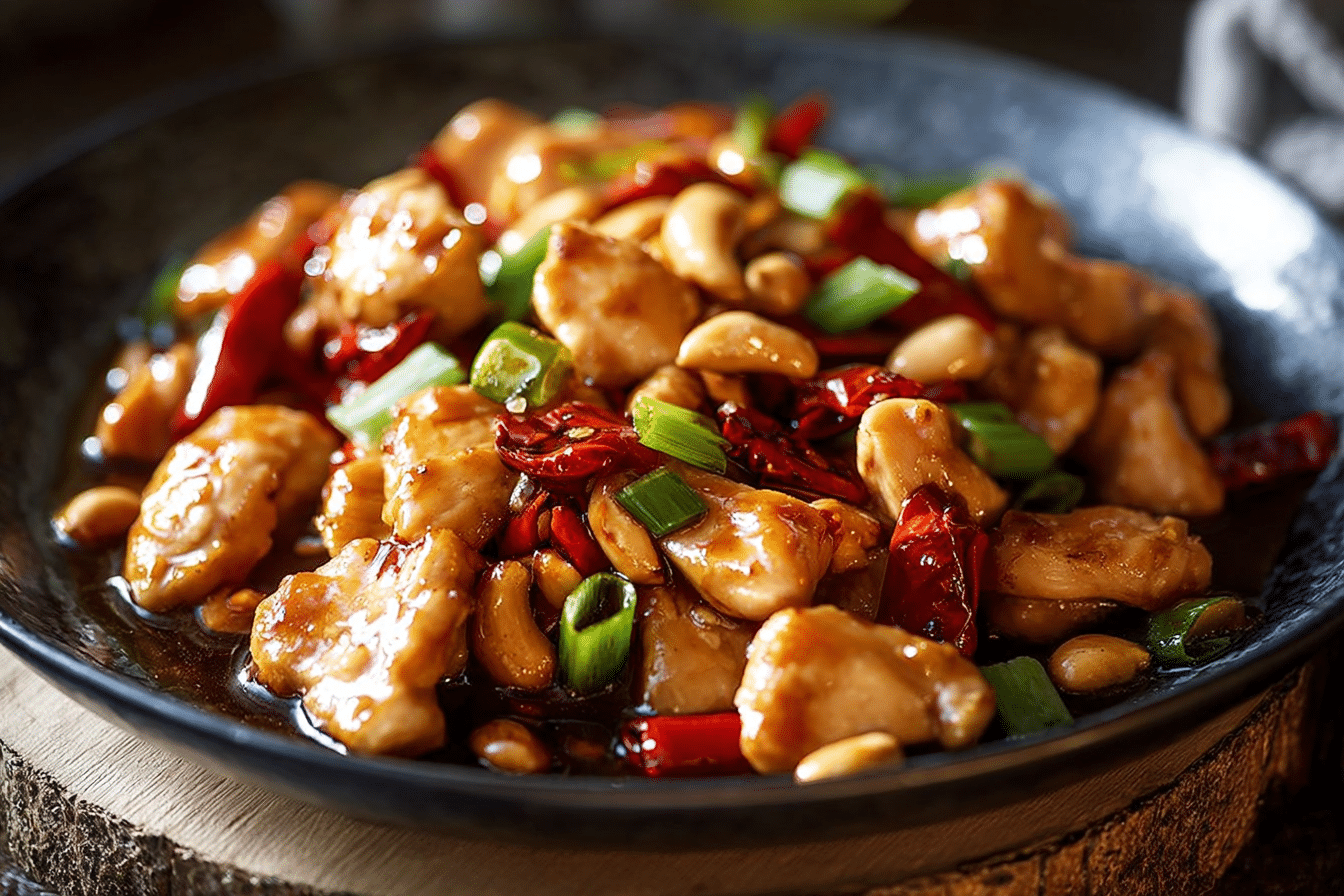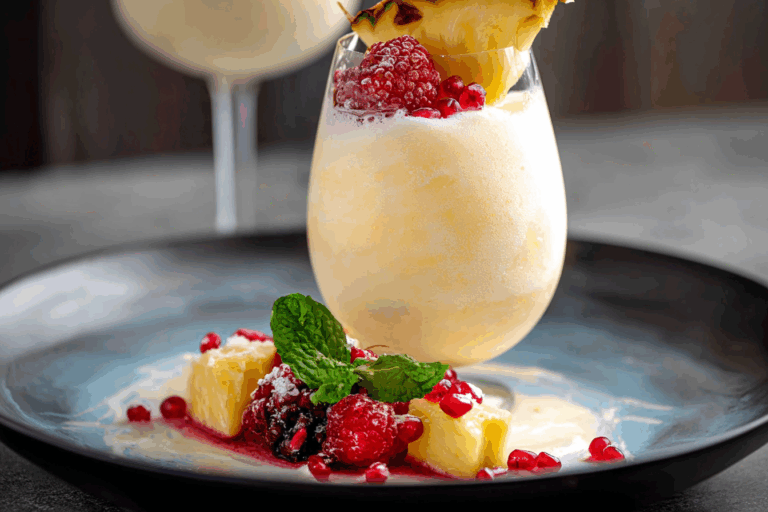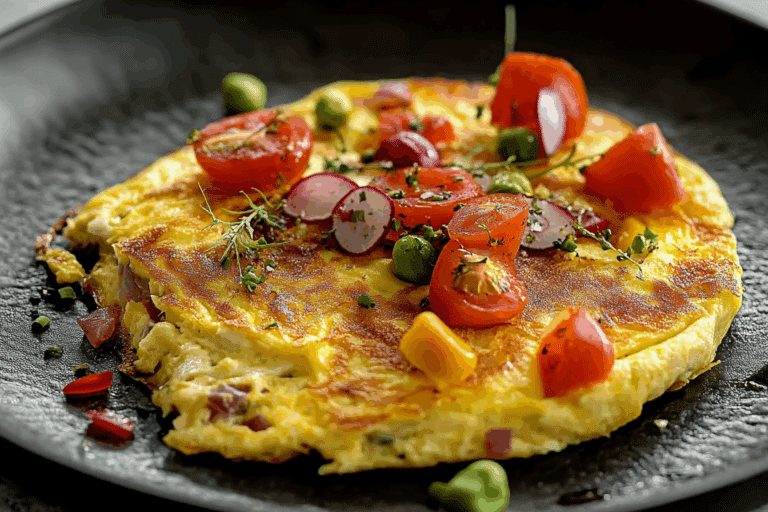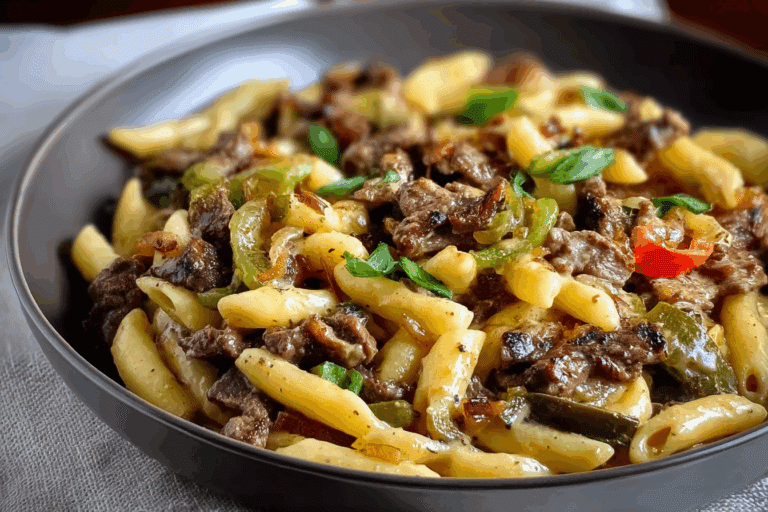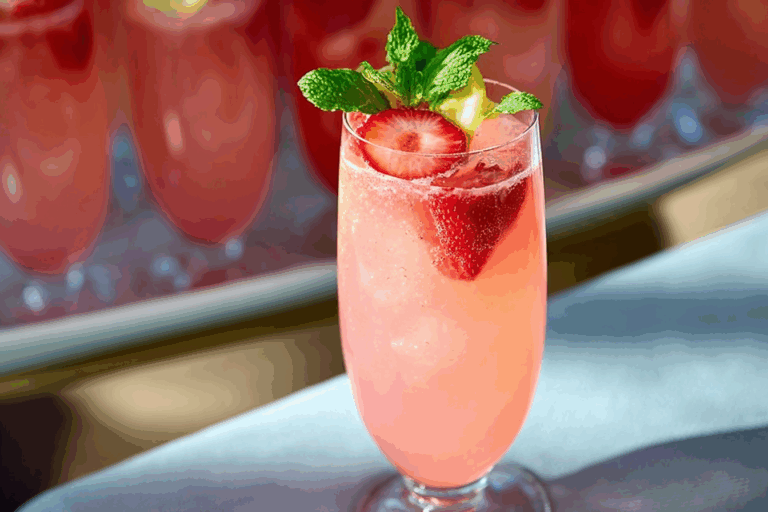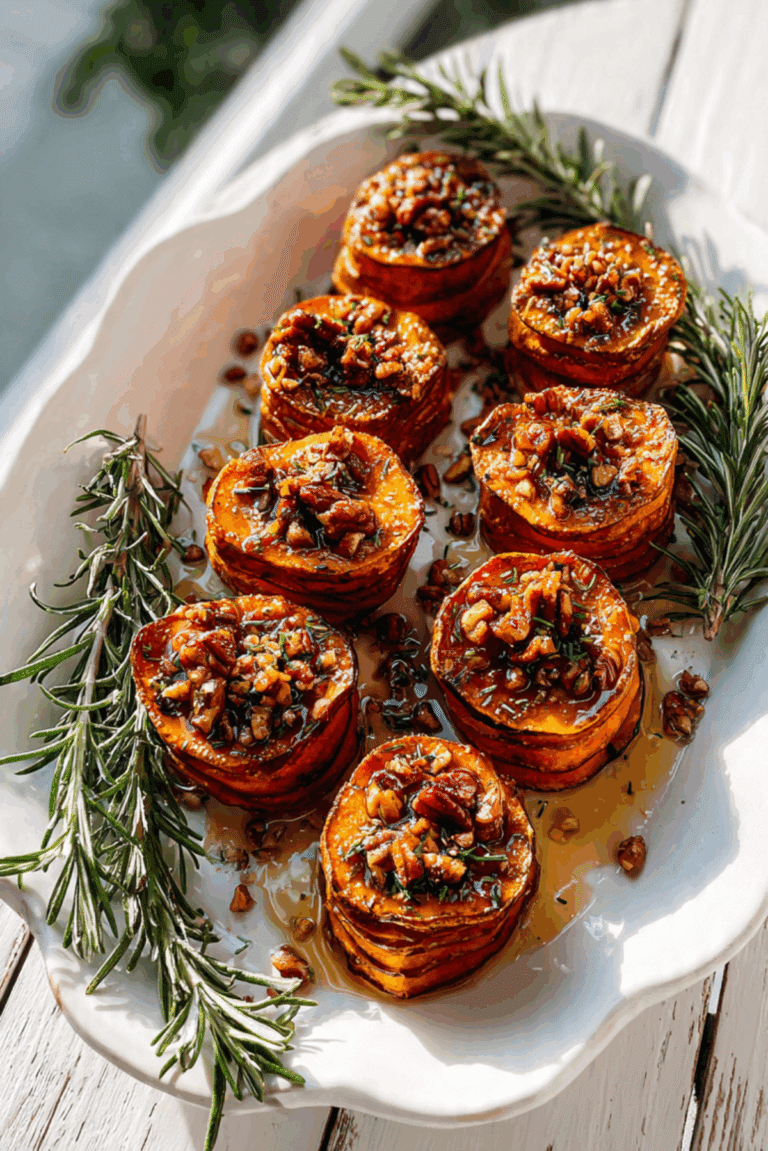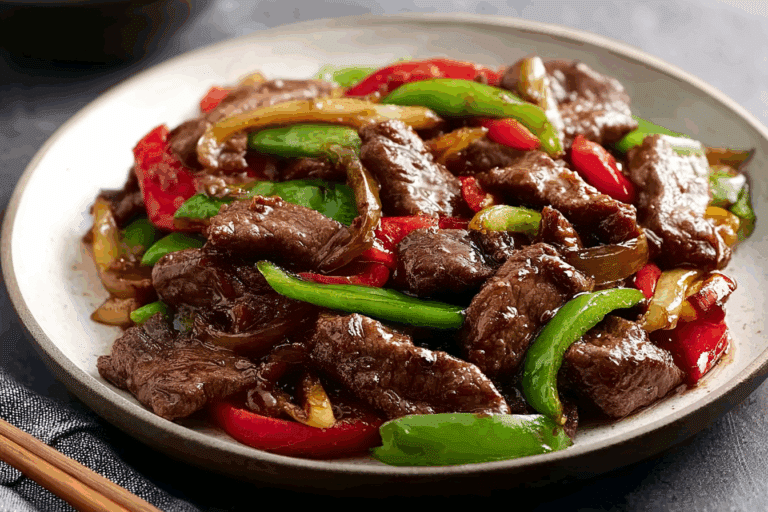Kung Pao Chicken
There’s something truly magical about that first bite of Kung Pao Chicken—the glossy sauce clinging to juicy chicken pieces, the crunch of toasted peanuts, and the fiery tingle of dried chilies that play on your tongue. The aromas are bold and inviting, with notes of garlic, ginger, and that signature Sichuan pepper buzz. It’s a dish that dances between sweet, spicy, salty, and tangy, and once you start cooking it at home, you’ll wonder why you ever ordered takeout in the first place.
Behind the Recipe
Kung Pao Chicken holds a special place in my heart. I remember the first time I tried it as a teenager in a bustling Chinese restaurant tucked away in a quiet alley. The sizzling platter arrived at the table with clouds of fragrant steam and vibrant colors. Ever since, it’s been one of those dishes I come back to when I crave bold flavors and comforting textures. This recipe captures that nostalgic joy—delivered straight from your skillet to the table.
Recipe Origin or Trivia
Let’s take a quick flavorful detour into the roots of this classic. Kung Pao Chicken hails from the Sichuan province of China and is named after Ding Baozhen, a Qing Dynasty official and governor of Sichuan whose title was “Gong Bao”—which morphed into “Kung Pao.” The traditional version boasts mouth-numbing Sichuan peppercorns, a hallmark of Sichuan cuisine. Western adaptations often mellow out the spice, but the soul of the dish remains intact—fiery, saucy, and satisfying.
Why You’ll Love Kung Pao Chicken
This dish is a keeper for so many reasons. Whether you’re cooking for a weeknight dinner or impressing guests, it fits the bill beautifully.
Versatile: Swap proteins, adjust heat, or serve over rice, noodles, or lettuce cups.
Budget-Friendly: Uses pantry staples and affordable ingredients like chicken thighs and peanuts.
Quick and Easy: From start to finish, you’re looking at under 30 minutes.
Customizable: Add your favorite veggies like bell peppers or broccoli for a fresh twist.
Crowd-Pleasing: The bold flavors and textures appeal to just about everyone.
Make-Ahead Friendly: Prepare the sauce and chop ingredients in advance for a stress-free cook.
Great for Leftovers: Reheats beautifully, and tastes even better the next day.
Chef’s Pro Tips for Perfect Results
To really nail this dish at home, here are a few expert tips that elevate the flavors and textures every single time.
- Use chicken thighs for maximum juiciness and flavor—they’re more forgiving than breast meat.
- Toast the peanuts before adding them to deepen their nutty flavor and give them a delightful crunch.
- Don’t skip the cornstarch coating—it helps the chicken develop that slightly crispy exterior while sealing in moisture.
- Stir-fry quickly over high heat to mimic traditional wok cooking and preserve texture.
- Prepare all your ingredients before turning on the heat—this dish cooks fast.
Kitchen Tools You’ll Need
Before diving in, let’s make sure you’ve got everything ready for a smooth cooking experience.
Wok or Large Skillet: Essential for high-heat, quick cooking.
Cutting Board and Sharp Knife: For prepping chicken and veggies efficiently.
Mixing Bowls: To keep your marinade and sauce ingredients organized.
Measuring Spoons and Cups: Precision is key for flavor balance.
Spatula or Wooden Spoon: For tossing and stirring during the stir-fry.
Ingredients in Kung Pao Chicken
This dish is all about bold flavors working in harmony. Here’s what you’ll need and why:
- Boneless Chicken Thighs: 1 pound, cut into bite-sized pieces (juicy and flavorful, ideal for stir-fry).
- Soy Sauce: 2 tablespoons (adds depth and saltiness to both marinade and sauce).
- Shaoxing Wine: 1 tablespoon (enhances umami and aroma—can substitute with rice vinegar or broth).
- Cornstarch: 2 teaspoons (creates a light coating that crisps up when stir-fried).
- Dried Red Chilies: 8 to 12 pieces (brings the heat and signature kick).
- Sichuan Peppercorns: 1 teaspoon (delivers the tingling numbing spice).
- Garlic: 3 cloves, minced (fragrant and essential base flavor).
- Ginger: 1 tablespoon, minced (adds warmth and zing).
- Scallions: 3, chopped (offers freshness and mild onion notes).
- Roasted Peanuts: ½ cup (adds crunch and nuttiness).
- Vegetable Oil: 2 tablespoons (for stir-frying and flavor infusion).
For the Sauce:
- Soy Sauce: 2 tablespoons (main salty component).
- Dark Soy Sauce: 1 tablespoon (richer color and deeper flavor).
- Rice Vinegar: 1 tablespoon (balances richness with acidity).
- Sugar: 1 tablespoon (adds sweetness to balance the heat).
- Water: 2 tablespoons (loosens the sauce for better coating).
- Cornstarch: 1 teaspoon (thickens the sauce for that classic glaze).
Ingredient Substitutions
Need to make a few swaps? Here are some easy alternatives.
Shaoxing Wine: Rice vinegar or chicken broth.
Sichuan Peppercorns: Black pepper with a pinch of lemon zest.
Chicken Thighs: Chicken breast, tofu, or shrimp.
Dark Soy Sauce: Regular soy sauce plus a dash of molasses.
Peanuts: Cashews or sunflower seeds for nut allergies.
Ingredient Spotlight
Sichuan Peppercorns: These aren’t spicy in the usual way. Instead, they create a unique numbing sensation that pairs beautifully with chili heat.
Dark Soy Sauce: This thicker, less salty soy sauce adds that deep mahogany color and a richer umami base to the dish.
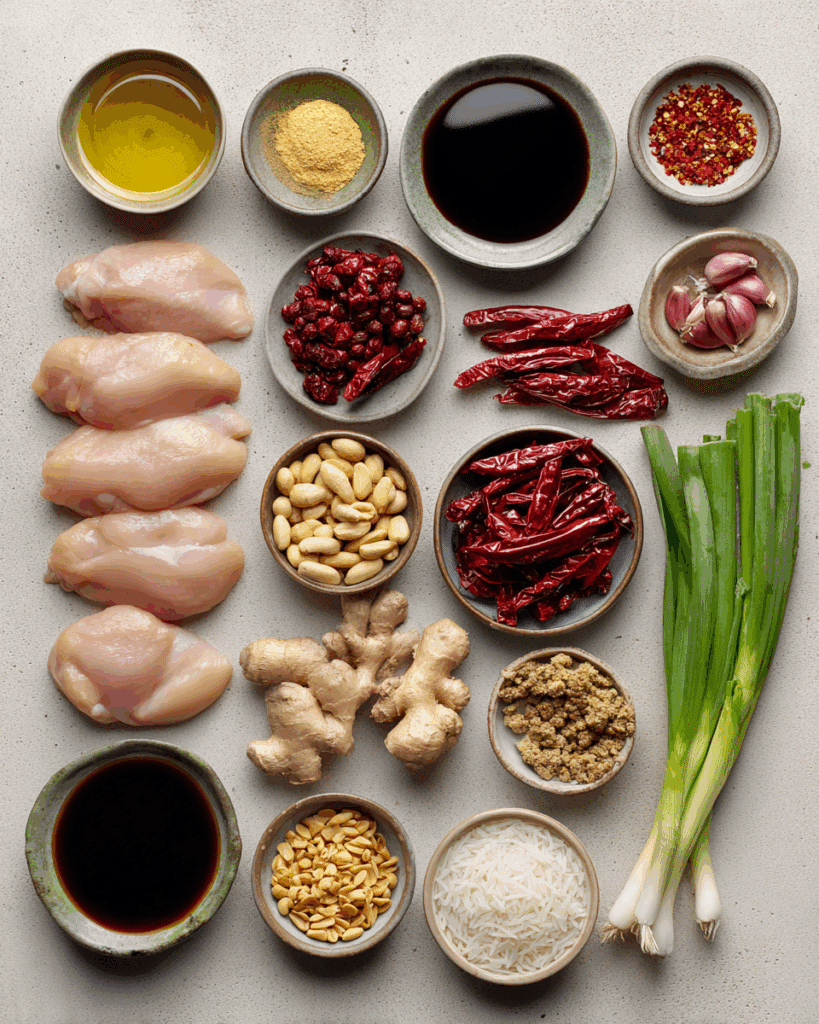
Instructions for Making Kung Pao Chicken
Get ready for a sizzling good time—this dish comes together quickly and deliciously.
- Preheat Your Equipment:
Heat your wok or large skillet over medium-high heat until very hot. - Combine Ingredients:
Marinate chicken with 2 tablespoons soy sauce, 1 tablespoon Shaoxing wine, and 2 teaspoons cornstarch. In another bowl, mix all sauce ingredients. - Prepare Your Cooking Vessel:
Add vegetable oil to the hot pan. Toast dried chilies and Sichuan peppercorns until aromatic. - Assemble the Dish:
Add marinated chicken to the pan. Stir-fry until browned and cooked through. - Cook to Perfection:
Toss in garlic, ginger, scallions, and peanuts. Pour in the sauce and stir until everything is evenly coated and glossy. - Finishing Touches:
Cook for another 1–2 minutes until the sauce thickens and clings to every bite. - Serve and Enjoy:
Plate over steamed rice or noodles. Garnish with extra scallions if desired.
Texture & Flavor Secrets
The best Kung Pao Chicken hits you with contrasts. The crispy edges of the chicken meet the soft scallions, the crunch of peanuts, and the tender heat of dried chilies. The sauce is glossy and rich, clinging to every bite with layers of sweet, salty, tangy, and spicy notes.
Cooking Tips & Tricks
A few bonus nuggets to make your dish shine:
- Chop uniformly: Even sizes mean even cooking.
- Use high heat: It keeps everything crisp, not soggy.
- Keep it moving: Stir-frying is all about motion.
- Adjust heat level: Add or remove chilies depending on your spice tolerance.
What to Avoid
Even seasoned cooks can run into snags. Here’s how to sidestep common issues:
- Overcrowding the pan: Leads to steaming instead of stir-frying.
- Skipping the marinade: You’ll miss out on that tender texture.
- Burning the chilies: Cook just until fragrant to avoid bitterness.
- Using cold ingredients: Let your chicken sit out briefly for even cooking.
Nutrition Facts
Servings: 4
Calories per serving: 360
Note: These are approximate values.
Preparation Time
Prep Time: 15 minutes
Cook Time: 15 minutes
Total Time: 30 minutes
Make-Ahead and Storage Tips
Kung Pao Chicken is surprisingly friendly for meal prep. You can chop the chicken and veggies, toast the peanuts, and whisk the sauce a day ahead. Store leftovers in an airtight container in the fridge for up to 3 days. Reheat in a skillet or microwave until warmed through. You can also freeze it for up to a month—just leave out the peanuts and add fresh ones after reheating to keep the crunch alive.
How to Serve Kung Pao Chicken
The classic pairing is steamed jasmine rice, but don’t stop there. Serve over brown rice, soba noodles, or even in lettuce wraps for a low-carb twist. A chilled cucumber salad or sautéed greens on the side make for a complete, satisfying meal.
Creative Leftover Transformations
Got extra Kung Pao Chicken? Transform it into something fresh:
- Kung Pao Fried Rice: Chop and toss into day-old rice with an egg.
- Stuffed Wraps: Roll in flatbread with crunchy lettuce and sliced cucumbers.
- Asian Tacos: Serve in warm tortillas with a drizzle of hoisin mayo.
Additional Tips
- Double the sauce: If you like it extra saucy, this one’s a winner.
- Try a squeeze of lime: Just before serving for a fresh twist.
- Keep peanuts separate: Until serving if you’re meal-prepping.
Make It a Showstopper
Presentation matters. Serve in a dark ceramic bowl for contrast. Top with diagonally sliced scallions and a few whole chilies for drama. A drizzle of sesame oil can add a final glisten.
Variations to Try
- Kung Pao Tofu: Use firm tofu for a vegetarian version with the same bold flavors.
- Sweet and Spicy: Add pineapple chunks for a tangy-sweet contrast.
- Extra Veggies: Stir in diced bell peppers or zucchini for added color and crunch.
- Low-Sodium: Use low-sodium soy sauce and skip added salt.
- Gluten-Free: Swap soy sauce for tamari and double-check all labels.
FAQ’s
Q1: Can I make this without Sichuan peppercorns?
A1: Yes, but you’ll miss the signature tingling spice. Substitute with black pepper and lemon zest for a hint of brightness.
Q2: What type of chilies should I use?
A2: Dried Chinese red chilies or Thai chilies work great. Adjust quantity based on your spice preference.
Q3: Is this dish very spicy?
A3: It has a kick, but you control the heat. Use fewer chilies or remove seeds for milder flavor.
Q4: Can I use chicken breast?
A4: Absolutely. Just don’t overcook it, as it can dry out faster than thighs.
Q5: Can I meal-prep this dish?
A5: Yes! Prep ingredients and sauce ahead of time, and cook fresh when ready.
Q6: How do I reheat Kung Pao Chicken?
A6: Skillet is best to retain texture, but microwave works in a pinch.
Q7: Can I make this dish gluten-free?
A7: Yes. Use tamari instead of soy sauce and check that your cornstarch is gluten-free.
Q8: Is it kid-friendly?
A8: Reduce the chilies and it becomes a great family meal.
Q9: What can I serve with it?
A9: Rice, noodles, steamed vegetables, or cucumber salad all complement it beautifully.
Q10: Can I freeze Kung Pao Chicken?
A10: Yes, just leave out the peanuts and add fresh after reheating.
Conclusion
Kung Pao Chicken is one of those rare dishes that’s as fun to cook as it is to eat. The bold blend of spicy, sweet, and savory, paired with contrasting textures, makes every bite exciting. Whether you’re new to stir-frying or a seasoned kitchen adventurer, trust me—you’re going to love this. So fire up your wok and let the flavors fly!
Print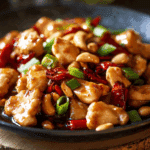
Kung Pao Chicken
- Total Time: 30 minutes
- Yield: 4 servings
- Diet: Halal
Description
A bold and flavorful Chinese classic featuring tender chicken, crunchy peanuts, and a spicy-sweet sauce with authentic Sichuan flair.
Ingredients
- Boneless Chicken Thighs: 1 pound, cut into bite-sized pieces
- Soy Sauce: 2 tablespoons
- Shaoxing Wine: 1 tablespoon
- Cornstarch: 2 teaspoons
- Dried Red Chilies: 8 to 12 pieces
- Sichuan Peppercorns: 1 teaspoon
- Garlic: 3 cloves, minced
- Ginger: 1 tablespoon, minced
- Scallions: 3, chopped
- Roasted Peanuts: ½ cup
- Vegetable Oil: 2 tablespoons
- Soy Sauce: 2 tablespoons (for sauce)
- Dark Soy Sauce: 1 tablespoon
- Rice Vinegar: 1 tablespoon
- Sugar: 1 tablespoon
- Water: 2 tablespoons
- Cornstarch: 1 teaspoon (for sauce)
Instructions
- Preheat Your Equipment: Heat your wok or large skillet over medium-high heat until very hot.
- Combine Ingredients: Marinate chicken with soy sauce, Shaoxing wine, and cornstarch. In another bowl, mix all sauce ingredients.
- Prepare Your Cooking Vessel: Add oil to the hot pan. Toast dried chilies and Sichuan peppercorns until aromatic.
- Assemble the Dish: Add marinated chicken and stir-fry until browned and cooked through.
- Cook to Perfection: Toss in garlic, ginger, scallions, and peanuts. Pour in the sauce and stir to coat.
- Finishing Touches: Cook another 1–2 minutes until sauce thickens and clings to chicken.
- Serve and Enjoy: Serve over steamed rice or noodles, garnish with extra scallions if desired.
Notes
- Use high heat to preserve texture and prevent steaming.
- Adjust chilies based on spice tolerance.
- Double the sauce if you like it extra saucy.
- Let ingredients come to room temperature for even cooking.
- Prep Time: 15 minutes
- Cook Time: 15 minutes
- Category: Main Course
- Method: Stir-Fry
- Cuisine: Chinese
Nutrition
- Serving Size: 1 serving
- Calories: 360
- Sugar: 5g
- Sodium: 800mg
- Fat: 20g
- Saturated Fat: 4g
- Unsaturated Fat: 14g
- Trans Fat: 0g
- Carbohydrates: 20g
- Fiber: 2g
- Protein: 28g
- Cholesterol: 120mg

